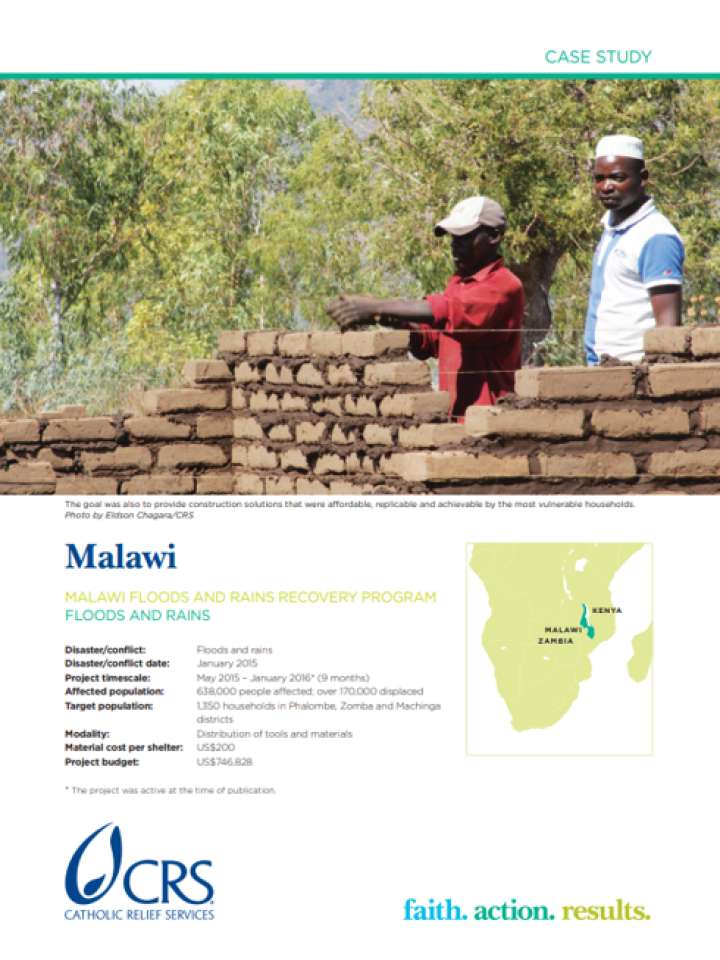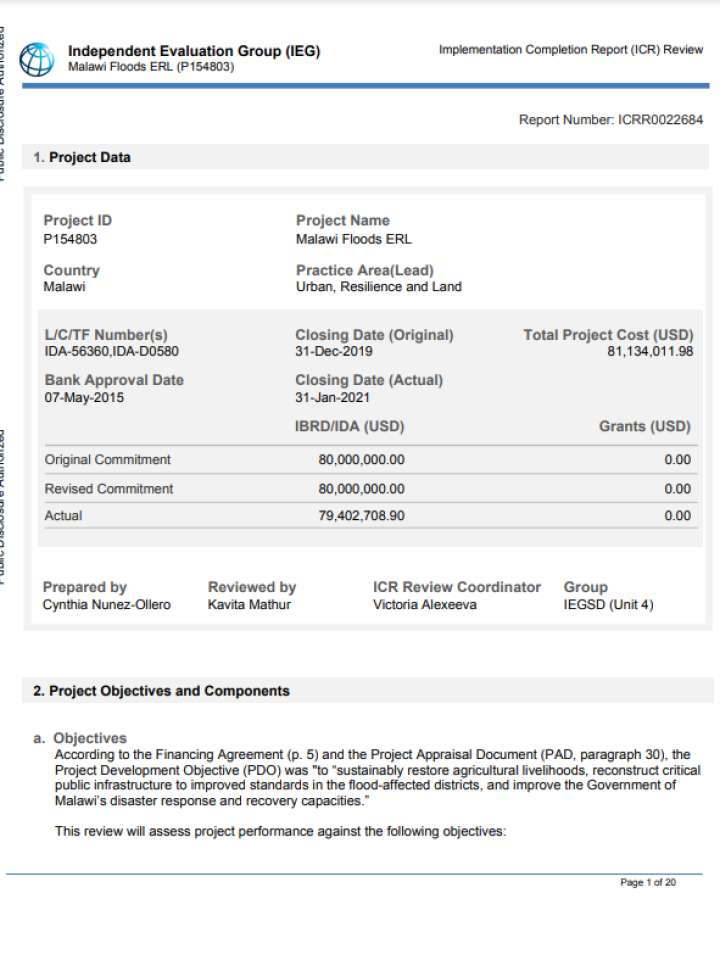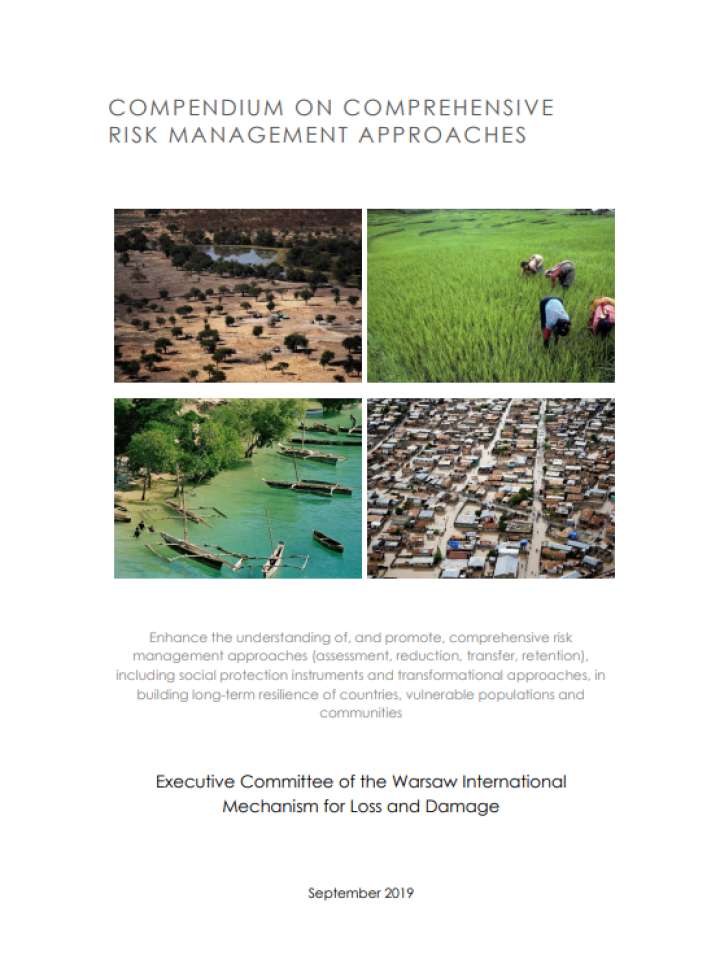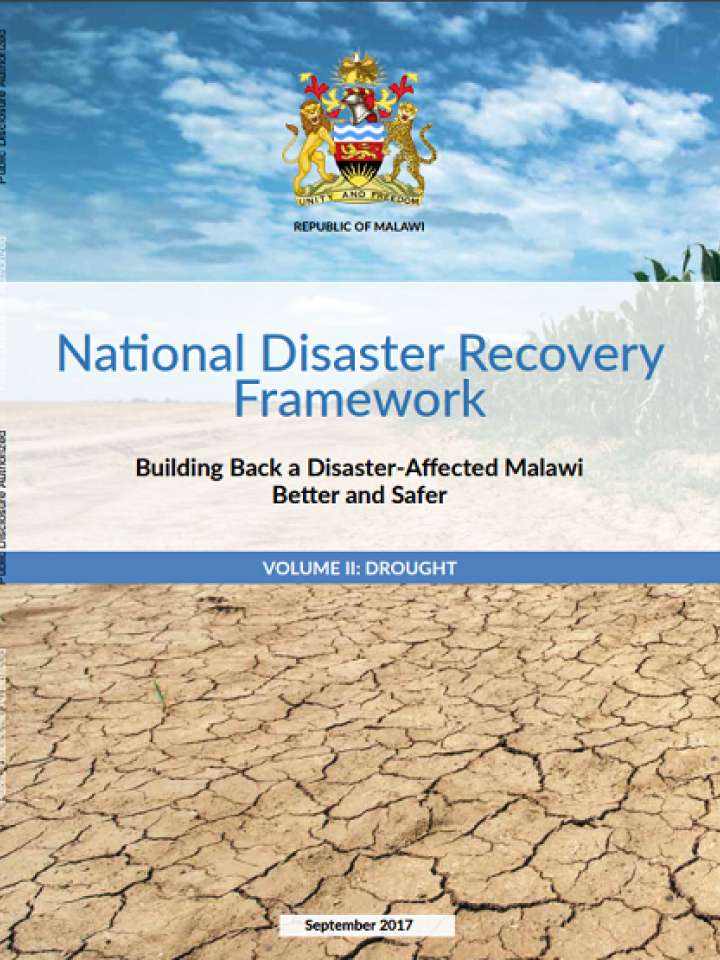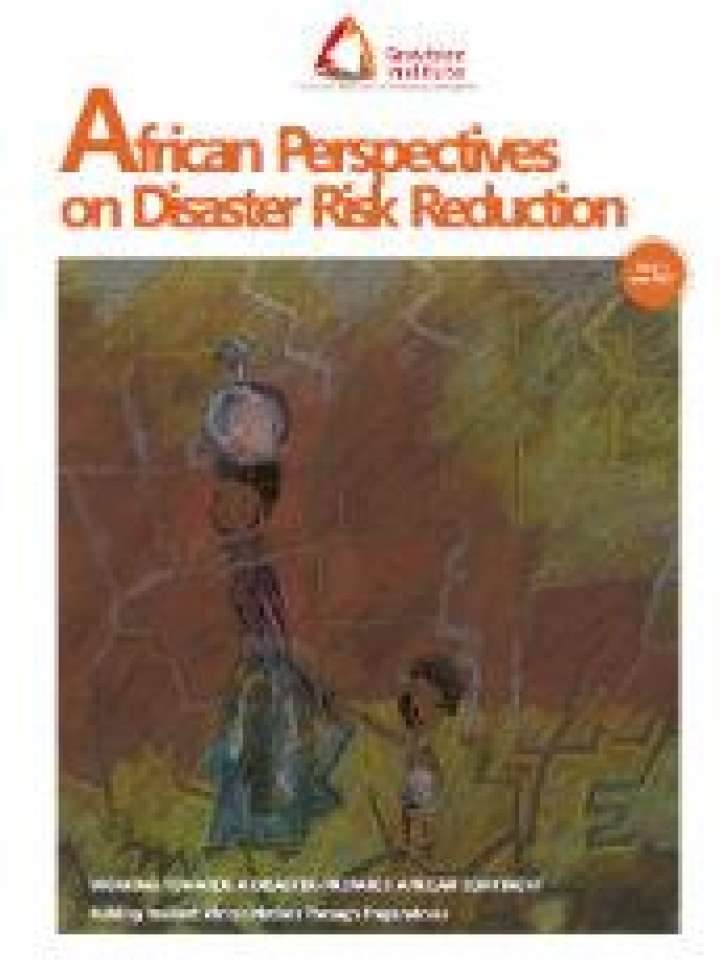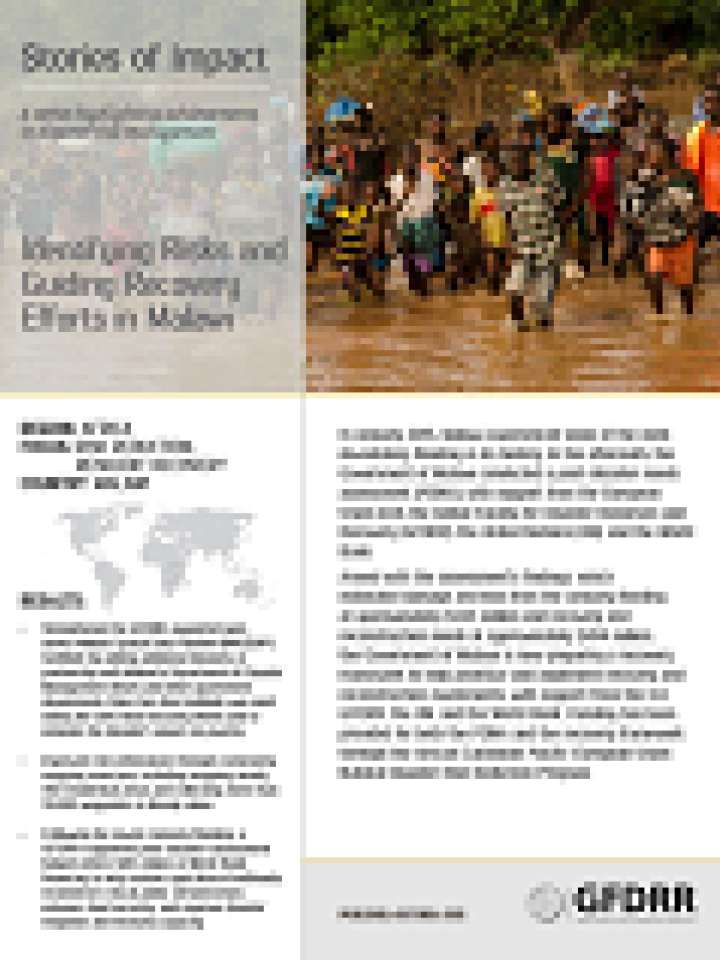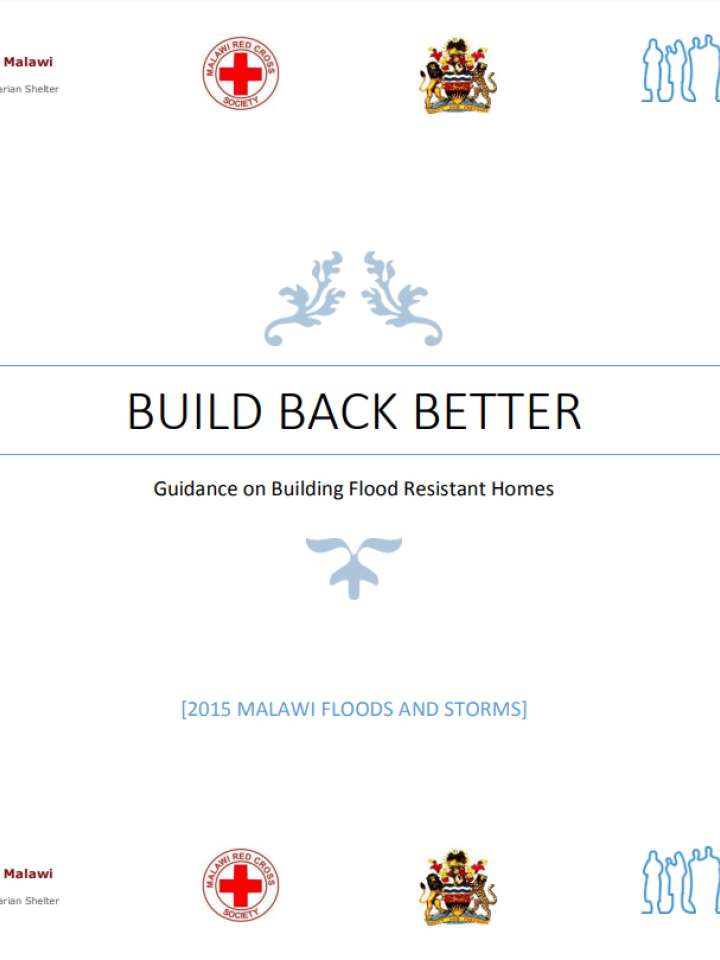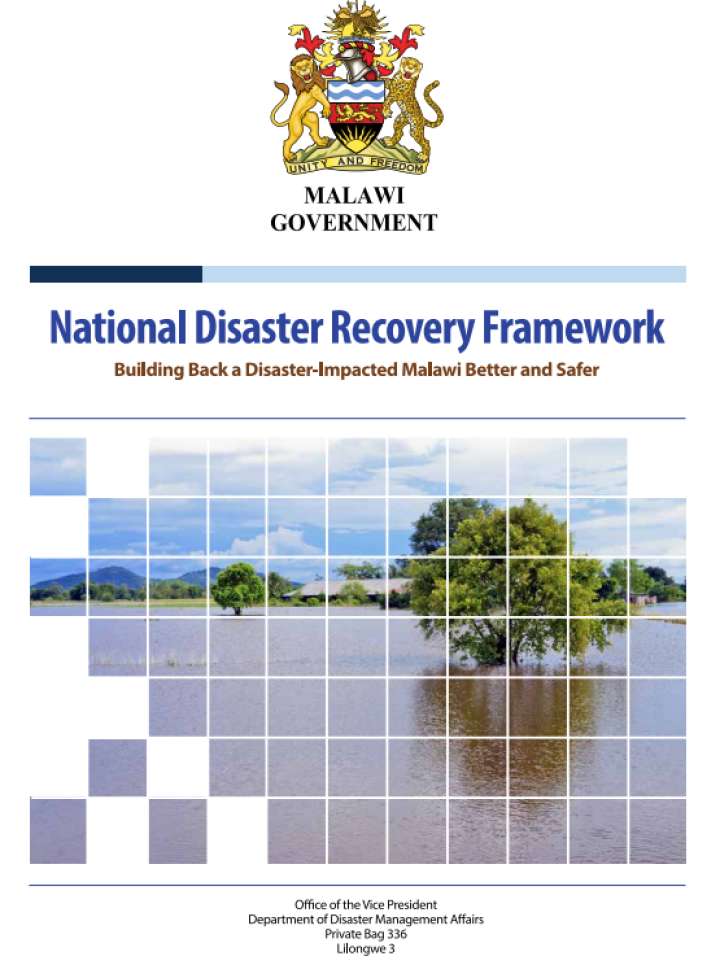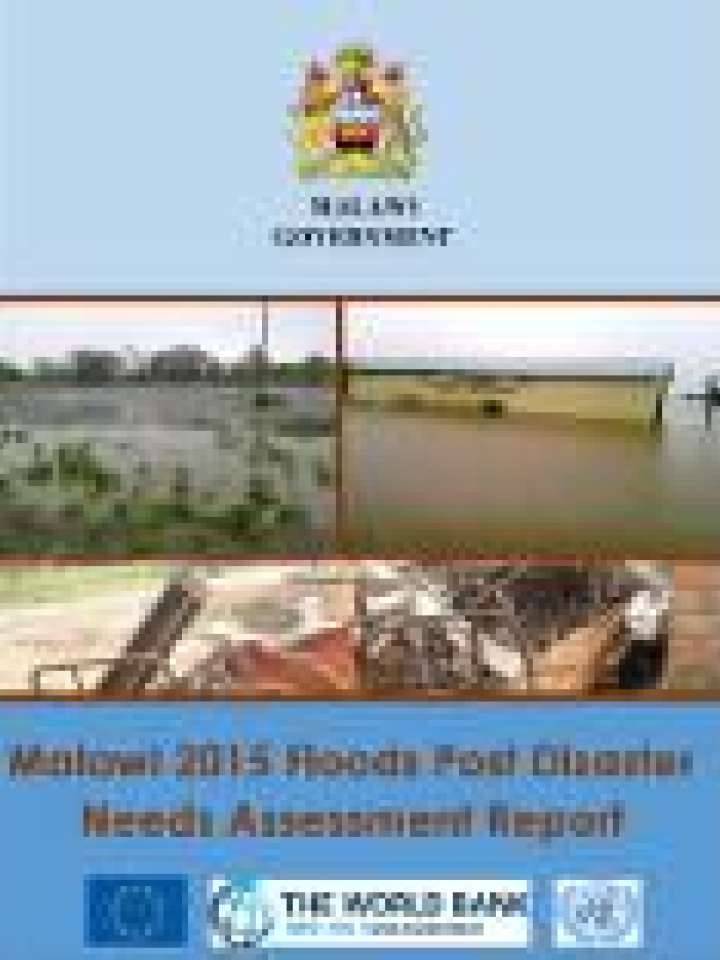Recovery Collection: Malawi: Floods 2015
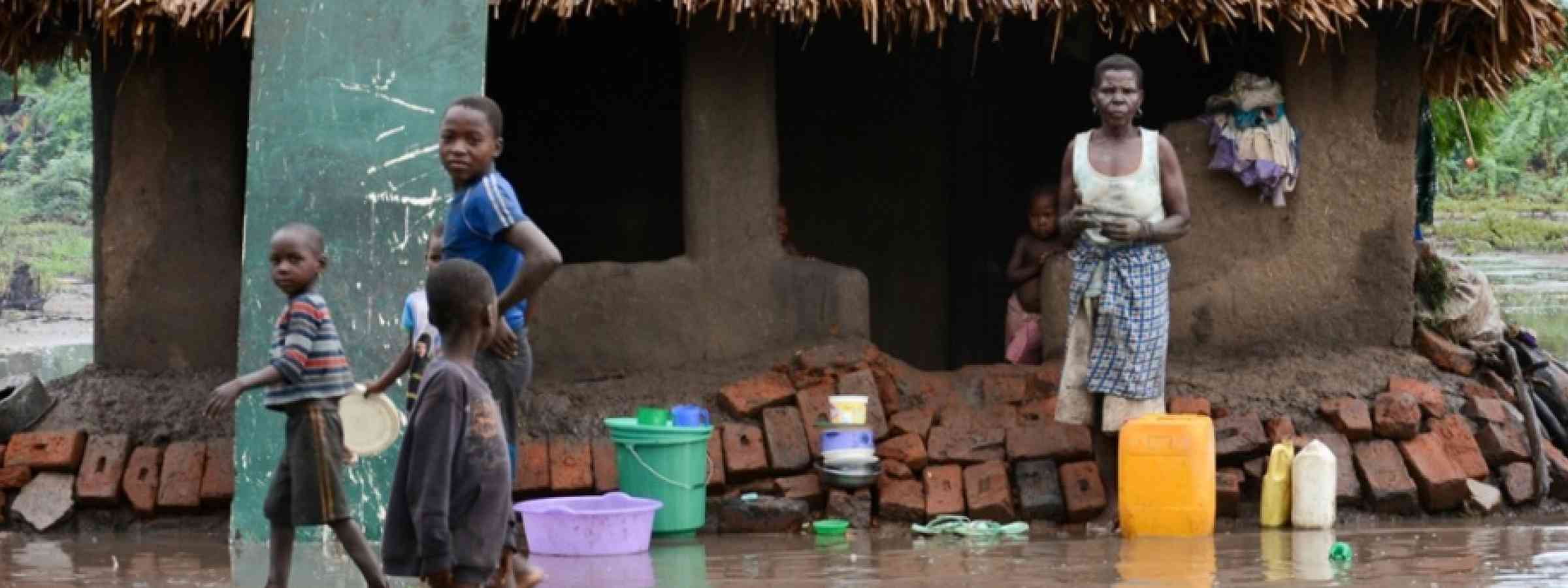
Introduction
The January 2015 rainfall was the highest on record for Malawi constituting a 1-in-500 year event. It resulted to major flooding particularly in the southern region where the districts are among the poorest in the country. The floods caused 106 deaths, displaced 230,000 people and affected more than 1 million population in 15 districts. The Post-Disaster Needs Assessment estimated damage and losses amounting to USD335 million (equivalent to approximately 5.0 percent of Gross Domestic Product) and recovery and reconstruction needs at USD494 million.
To oversee recovery and reconstruction, the Inter-Departmental Recovery Prioritisation Taskforce was established which supported the National Disaster Preparedness and Relief Committee and the National Disaster Preparedness and Relief Technical Committee. The National Disaster Recovery Framework was developed with the goal of restoring livelihoods and infrastructure following the principles of building back better and smarter, focusing on resilience, policy alignment, community participation, decentralization, multi-stakeholder engagement, integration of gender and other cross-cutting issues, building on ongoing development initiatives, and linking with ongoing resilience programs. This provided the legal framework and enabled financing instruments for disaster recovery through a risk layering approach to disaster.
Recovery activities were prioritized in the sectors that were hit hardest including housing, transport, agriculture, education, health, and water, sanitation and hygiene across several priority districts. Among the interventions that achieved some level of success are the adoption of disaster resilient designs in the investments in roads, education, and health, which has also become part of the institutional landscape; the addition of the safer housing construction guidelines to the Buildings Act, Buildings Policy, and Buildings Regulations to guide construction of public and private buildings, including health facilities; and the establishment of the Malawi Spatial Data Platform (MASDAP), an open source platform for sharing risk and hazard information.
References:
Government of Malawi. (2015). National Disaster Recovery Framework: Malawi. Volume I: Building Back a Disaster-Impacted Malawi Better and Safer. Lilongwe: Office of the Vice President.
World Bank. (2021). Malawi Floods ERL: Implementation Completion Report (ICR) Review. Washington, D.C.: The World Bank.

